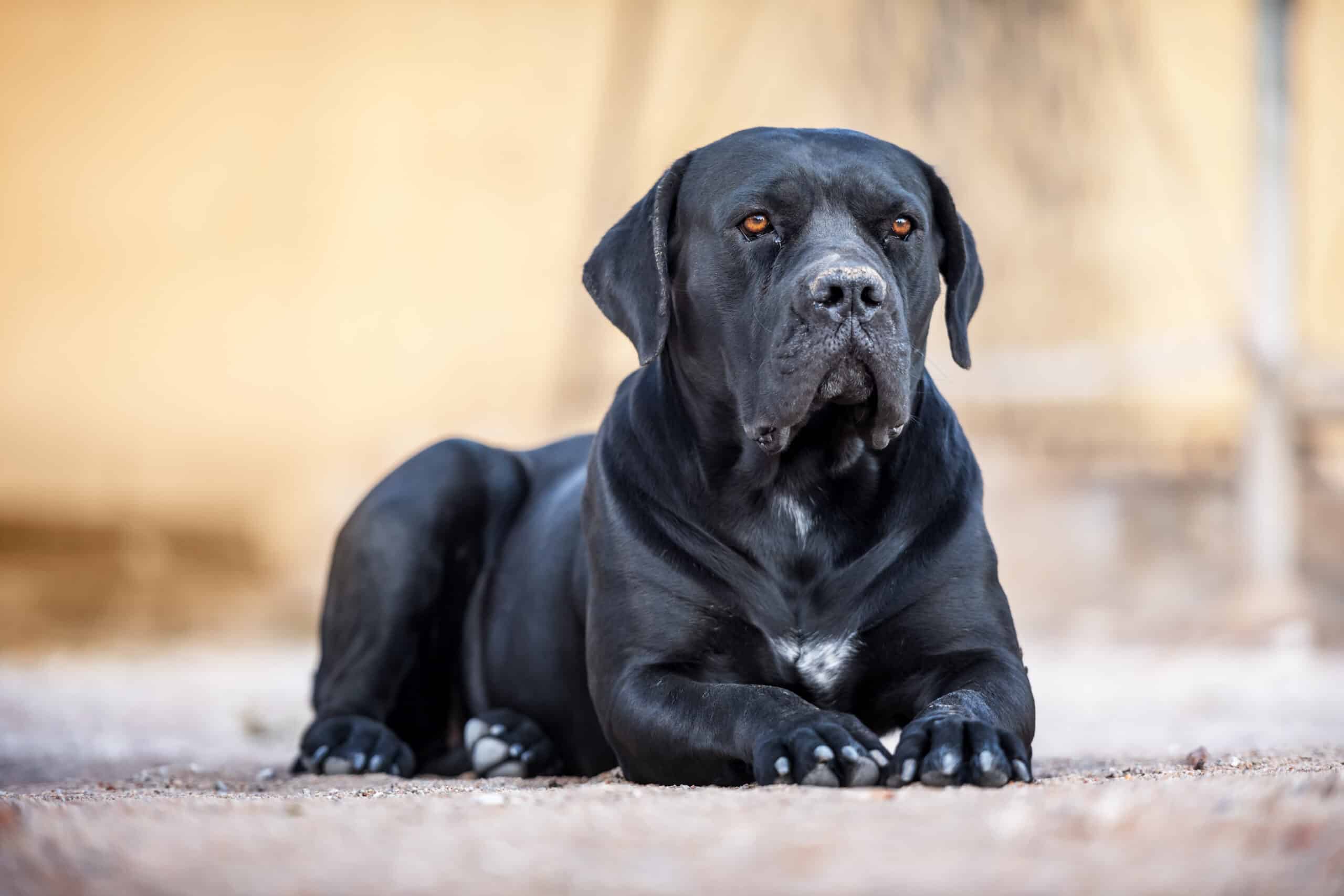
The Cane Corso, Tibetan Mastiff, and Neapolitan Mastiff are all large, powerful mastiff dogs. But which one is right for you?
This article will compare and contrast the Cane Corso, Tibetan Mastiff, and Neapolitan Mastiff, so you can decide which breed is the best fit for your lifestyle.
Table of contents
What do mastiffs look like?
Mastiffs are large, muscular dogs with thick necks and short muzzles. They typically have cropped ears and docked tails. Cane Corsos, Tibetan Mastiffs, and Neapolitan Mastiffs are all members of the mastiff family.
What does a cane Corso dog look like?
The cane Corso is known for its large head and blocky build. Cane Corsos are typically black, gray, or fawn-colored.

What does a Tibetan mastiff look like?
The Tibetan mastiff is a large, powerful dog with a thick coat. Tibetan mastiffs are typically black, brown, or gray.
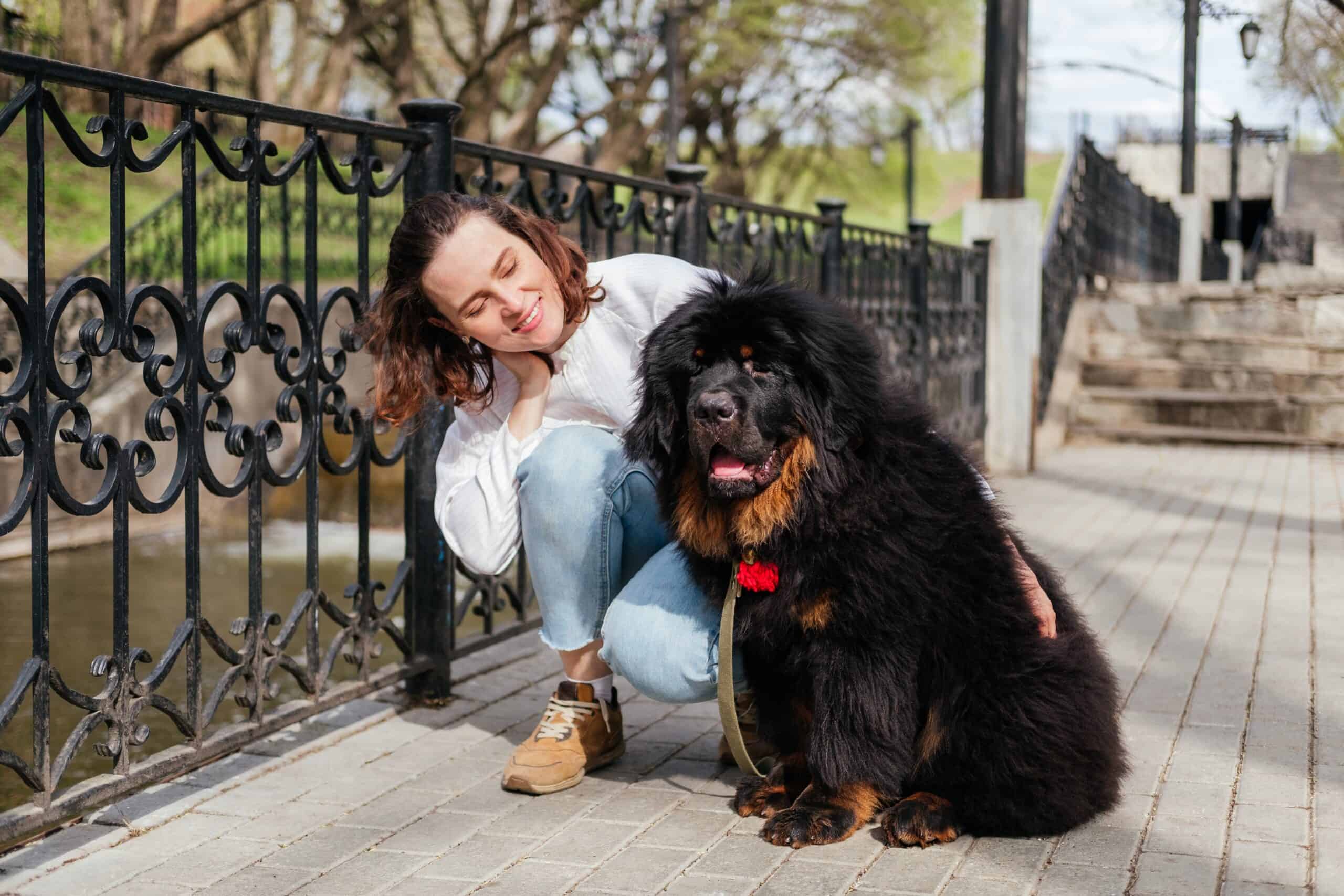
What does a Neapolitan mastiff look like?
A Neapolitan mastiff is a large, muscular dog with a wrinkled face. Neapolitan mastiffs are typically black, brindle, or fawn.

What is the difference in appearance between a Cane Corso, Tibetan Mastiff, and a Neapolitan mastiff?
Cane Corsos and Tibetan Mastiffs are both large, muscular dogs with thick coats, but there are some notable differences in their appearance. Cane Corsos are typically black or brindle, while Tibetan Mastiffs can be any color.
Tibetan Mastiffs also have a characteristic “lion’s mane” of long hair around their face, which Cane Corso’s lack. Both breeds have floppy ears, but the Cane Corso’s ears are shorter and wider than the Tibetan Mastiff’s.
The Neapolitan mastiff is a large, molosser-type dog with a short coat that can be black, blue, brindle, or mahogany. Unlike the other two breeds, Neapolitan mastiffs have droopy jowls and a wrinkled face. They also have erect ears.
All three breeds are known for being loyal and protective, but the Neapolitan mastiff is considered to be more laid back and gentle than the other two.
What is the biggest breed of mastiff?
Mastiffs are known for being large dogs, the neapolitan mastiff is the largest breed of mastiff.

How big does a cane Corso get?
Cane Corsos are large dogs, with males typically measuring between 24 and 28 inches (62-70cm) tall at the shoulder. Females are usually slightly smaller, measuring between 22 and 26 inches (58-66cm) tall.
How big does a Tibetan Mastiff get?
Tibetan Mastiffs are large dogs, with males typically measuring between 27 and 29 inches (69-74cm) tall at the shoulder. Females are usually slightly smaller, measuring between 25 and 28 inches (64-71cm) tall.
How big does a neapolitan mastiff get?
Neapolitan Mastiffs are large dogs, with males typically measuring between 24 and 31 inches (61-79cm) tall at the shoulder. Females are usually slightly smaller, measuring between 23 and 29 inches (58-74cm) tall.
What is the difference in size between a Cane Corso, Tibetan Mastiff and a neapolitan mastiff?
The Cane Corso and Tibetan Mastiff are both large breeds of mastiff, but the neapolitan mastiff is the largest of the three.
How much does a mastiff weigh?
Mastiffs are large, muscular dogs that can weigh anywhere from 90 to 155 pounds (45-91 kg).
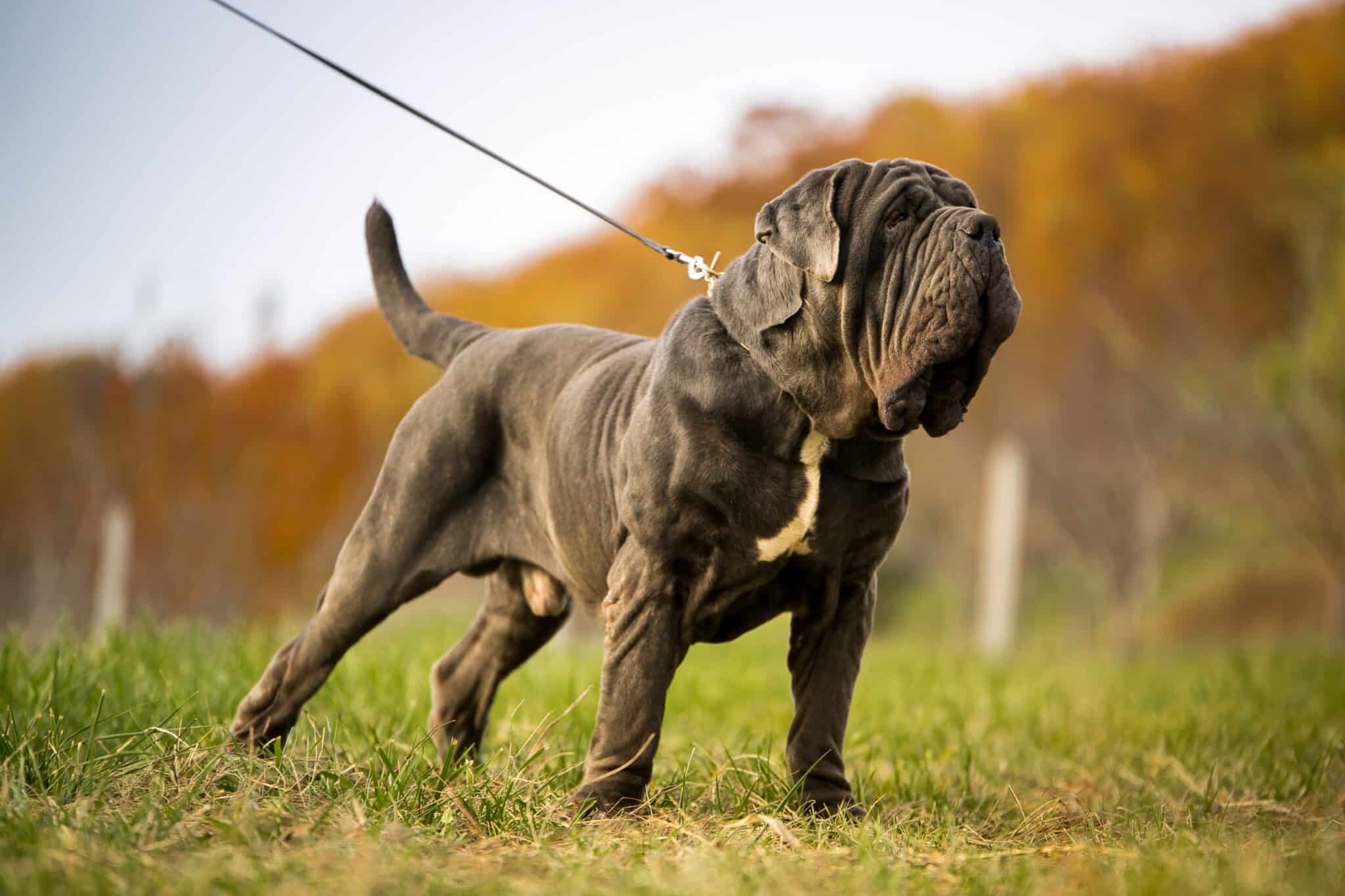
How much does a cane corso weigh?
Cane Corsos are large dogs, and they typically weigh between 88 and 110 pounds (40-50 kg). However, there is some variation in size, and some Corsos may be larger or smaller than this. Corsos are powerful dogs, and they are built for work rather than for show. As a result, they tend to be muscled and compact, rather than long and slender. Corsos are athletic dogs, and they need plenty of exercise to stay healthy and happy
How much do tibetan mastiffs weigh?
Tibetan Mastiffs are known for being large and imposing dogs, and they certainly live up to their reputation. Males can weigh as much as 119 pounds (54 kg), while females typically weigh between 90 and 109 pounds (41 – 49.9 kg).
However, weight can vary depending on the individual dog, so it’s always best to ask your veterinarian for an accurate estimate. Despite their large size, Tibetan Mastiffs are relatively inactive indoors and only require moderate exercise.
How much does a neapolitan mastiff weigh?
Neapolitan Mastiffs are one of the largest breeds of dog, and they weigh in at a whopping 110 to 155 pounds (50-70 kg). That’s a lot of dog! But their large size is part of what makes them so special. They’re gentle giants, and they make great companion animals. So if you’re looking for a big cuddly dog to add to your family, a Neapolitan Mastiff might be just the right fit.
What is the weight difference between a cane corso, a tibetan mastiff, and a neapolitan mastiff?
The Cane Corso is the lightest of the three breeds, weighing in at 88 to 110 pounds (40-50 kg). The Tibetan Mastiff is the next heaviest, typically weighing between 90 and 109 pounds (41 – 49.9 kg). And finally, the Neapolitan Mastiff is the heaviest of the three, tipping the scales at 110 to 155 pounds (50-70 kg).
Which mastiff is the best family dog?
The Cane Corso, the Tibetan Mastiff, and the Neapolitan Mastiff are all large breeds of dogs that make great family pets. But which one is the best fit for your family?

Are cane Corso good family dogs?
Cane Corsos can make great family dogs, but they are not the right breed for every family. They need a lot of exercise and mental stimulation, so families who are active and have the time to commit to training their dog will be the happiest with a Cane Corso. They also require a lot of socialization, so families who are home more often or have another dog in the home will do best with a Cane Corso.
Because of their size and strength, they need an owner who is confident and firm in their leadership – someone who can provide structure and boundaries. So if you’re looking for a family dog who is loyal, loving, and obedient, a Cane Corso may be the right breed for you. But be sure to do your research and make sure you’re prepared to meet the needs of this breed before bringing one home.
Are Tibetan mastiff good family dogs?
Tibetan mastiffs are large, loyal dogs that have been used as guard dogs for centuries. Although they were once nearly extinct, they have slowly been making a comeback in recent years. However, before you decide to add a Tibetan mastiff to your family, it’s important to understand their unique temperament and needs.
Tibetan mastiffs are very independent and headstrong, which can make them difficult to train. They also need a lot of exercise and space to run, so they’re not a good fit for small homes or apartments. In addition, Tibetan mastiffs are protective of their families and can be aggressive toward strangers, so they may not be the best choice for households with young children.
However, if you’re looking for a devoted and protective companion, a Tibetan mastiff may be the perfect dog for you.
Are Neapolitan mastiffs good family dogs?
The answer, however, is not always simple. Neapolitan mastiffs are certainly large dogs, and they can be quite intimidating. They also require a lot of exercise and attention. However, they are also loyal and protective, and they make excellent guard dogs.
Ultimately, whether or not a Neapolitan mastiff is a good fit for a family depends on the specific needs and preferences of the family.
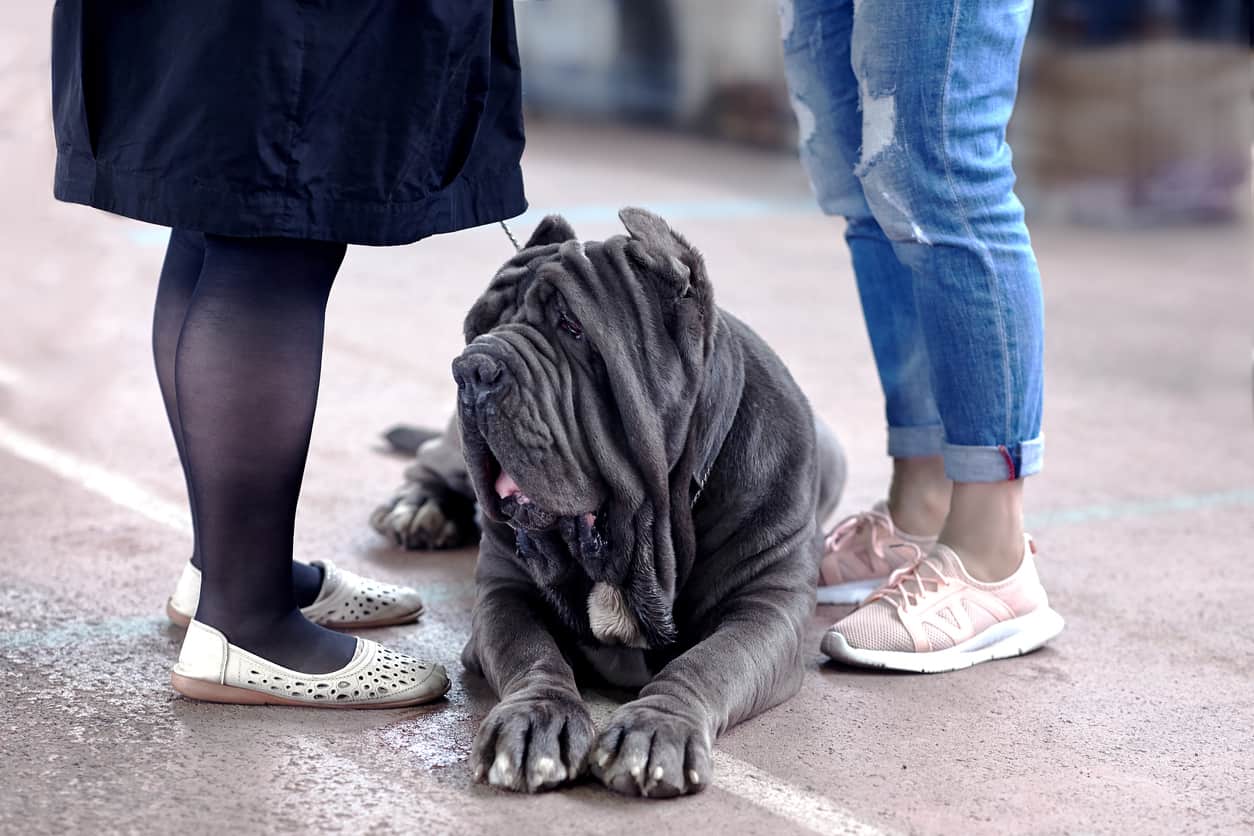
Which mastiff is the best family dog?
It depends on what you’re looking for in a family dog. If you want a loyal and protective companion, a Neapolitan Mastiff may be the right breed for you. If you’re looking for a dog who is easy to train and good with children, a Cane Corso may be a better choice. And if you’re looking for a big cuddly dog to add to your family, a Tibetan Mastiff may be just the right fit. Ultimately, the best family dog is the one that best meets the needs of your specific family.
Do mastiffs shed?
Mastiffs are large dogs with thick, long coats. While they don’t shed as much as some other breeds, they do shed more than others. If you’re considering adding a mastiff to your family, be prepared for some extra shedding.
Mastiffs typically shed twice a year, during the summer and fall. During these times, you may find yourself vacuuming more often than usual to keep up with the shedding. But don’t let the shedding deter you from adding a mastiff to your family – they make loyal and loving companions.

Do cane Corso’s shed a lot?
The answer is that they do not. In fact, the Cane Corso is one of the least shedding breeds out there. This is due to their short, tight coats. However, they are not completely hypoallergenic. They do produce some dander, which can be a problem for people with severe allergies. But for most people, the Cane Corso’s low shedding is a minor issue. So if you’re looking for a low-shedding breed, the Cane Corso should definitely be on your list.
Do Tibetan mastiffs shed?
Tibetan mastiffs are a large and loyal breed of dog, originally bred in the Tibetan Plateau. They are known for their thick coats, which can come in a variety of colors, including black, brown, red, and cream. Due to their thick coats, many people assume that Tibetan mastiffs do not shed. However, this is not the case. While they may not shed as much as other breeds of dogs, Tibetan mastiffs do shed their hair. In fact, they typically shed two to three times per year. During these periods of shedding, it is important to brush them regularly to remove loose hair and prevent mats from forming. With proper care, shedding does not have to be a problem for Tibetan mastiff owners.
Do neapolitan mastiffs shed?
This large, muscular dog is known for its thick, wrinkled skin and heavy coat. The coat is typically short, but it can be somewhat longer around the head and neck. The most common coat colors are black, blue, brindle, and fawn, but there is also a rarer white variety. While the coat does not require a lot of upkeep, it does shed throughout the year. frequent brushing can help to minimize shedding, but it is important to accept that some shedding is inevitable with this breed.
What were mastiffs used for?
The Mastiff is a breed of a large dog that has been around for nearly 2,500 years. They descended from the Molosser, an ancient type of dog known for its strength, and may have originated in Asia’s Himalayas of northern India.
They fought against gladiators, bears, and lions in combat stadiums. Later they were bred by English royalty as estate guardians and were used in wars. Now they are popular family companions.
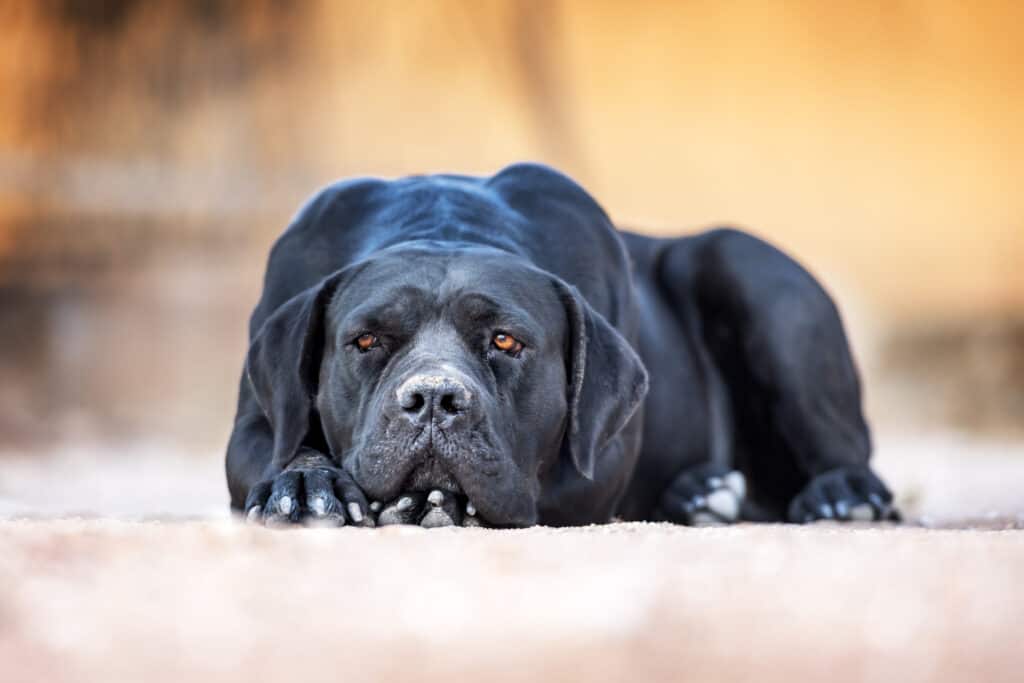
Where do cane corsos come from?
Cane corsos are a type of dog that is native to Italy. They are large dogs with short, coarse fur and long snouts. They were originally bred for hunting wild boar, but they are now commonly used as guard dogs and pets.
Cane corsos are intelligent and fiercely loyal to their owners. They require a great deal of exercise and training, but they can make wonderful companions for families with children. If you are thinking about getting a cane Corso, it is important to do your research to make sure that this is the right breed of dog for you.
Where is Tibetan mastiff from?
The Tibetan Mastiff is a large and imposing dog breed that originates from the Tibetan Plateau in Asia. Sometimes known as the Tibetan Lion Dog, these dogs were originally bred to protect livestock from predators such as wolves and bears.
They were also used as watchdogs, as their size and deep bark would deter intruders. Today, Tibetan Mastiffs are popular pets around the world, although they still retain their guarding instincts. These dogs are loyal and protective of their family, but they can also be headstrong and independent.
Although they are not suited to everyone, those who do choose to live with a Tibetan Mastiff will find them to be a loving and devoted companion.
Where is neapolitan mastiff from?
The Neapolitan Mastiff is an ancient breed of dog that originates from southern Italy. The breed was developed over 2,000 years ago to protect Roman estates and guard against intruders. In more recent history, the Neapolitan Mastiff has been used as a guard dog by the Italian army and police force.
Today, the Neapolitan Mastiff is a popular companion dog in Italy and other parts of Europe. The breed is also gaining popularity in the United States and other countries around the world.
How old do mastiffs live?
The Mastiff is a large and powerful dog breed that has been around for centuries. These dogs are known for their strength, size, and loyalty. Mastiffs typically live for 6-14 years, although some individual dogs may live longer or shorter lives depending on their health and lifestyle.
While Mastiffs are generally healthy dogs, they are prone to certain health problems, such as hip dysplasia, elbow dysplasia, and bloat. With proper care and diet, Mastiffs can live long and happy lives.
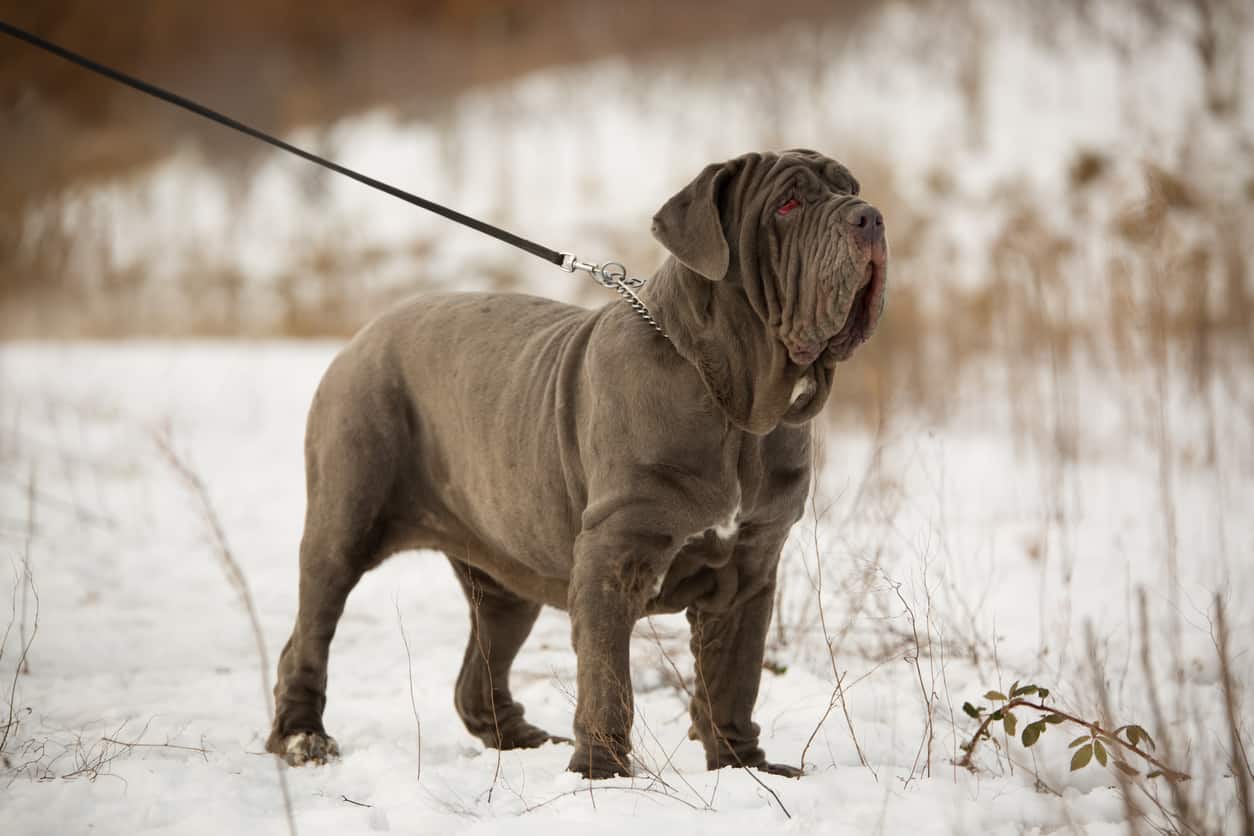
How long do cane Corso dogs live?
On average, a healthy Cane Corso can expect to live between 10 and 12 years. However, some factors can affect a dog’s lifespan, including diet, exercise, and genetics. For example, a Cane Corso that is well-fed and gets plenty of exercise is likely to live longer than a dog that does not receive proper care. Additionally, some Cane Corsos are predisposed to certain health conditions that can shorten their lifespan.
However, with proper care and attention, most Cane Corsos can enjoy a long and healthy life.
How long do Tibetan mastiffs live?
Unfortunately, the answer is not as clear-cut as we would like. The average lifespan of a Tibetan Mastiff is 11 to 14 years, but some individual dogs have been known to live as long as 15 or 16 years.
However, there are also many reports of Tibetan Mastiffs dying at a much younger age, which suggests that the breed is prone to health problems. In general, though, if you take good care of your Tibetan Mastiff, you can expect him to be by your side for many years to come.
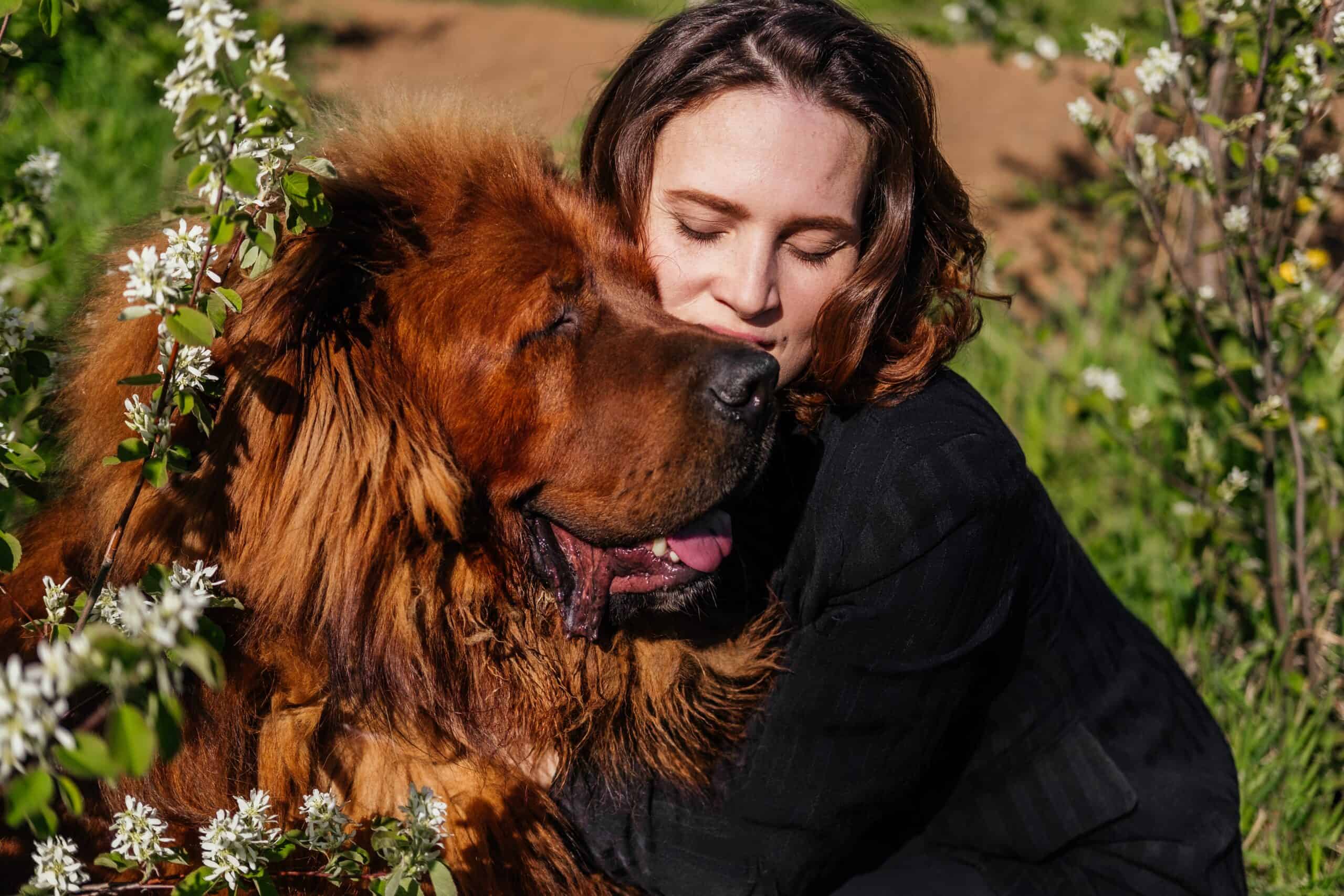
How long do Neapolitan mastiffs live?
On average, they live 8 to 10 years, though some may live as long as 15 years with proper care. Neapolitan mastiffs require a lot of exercise and need plenty of space to run and play.
They also do best with an experienced owner who can provide firm, consistent training. With proper care, neapolitan mastiffs can make loyal and loving companions.
What Mastiff is expected to live longer?
There is no definitive answer to this question as every dog is different and has different lifespans. However, in general, the Mastiff breed is expected to live between 6 and 14 years. Some individual dogs may live longer or shorter depending on their health and lifestyle.
Tibetan Mastiffs, for example, have an average lifespan of 11 to 14 years, while Cane Corsos have an average lifespan of 10 to 12 years.
Ultimately, the best way to ensure that your Mastiff lives a long and healthy life is to provide him with plenty of exercise, a nutritious diet, and regular veterinary care.
Final word – Cane corso vs tibetan mastiff vs neapolitan mastiff
There is no clear winner when it comes to the Cane Corso vs Tibetan Mastiff vs Neapolitan Mastiff debate. Each breed has its own unique set of characteristics and qualities that make it special. However, all three breeds are known for being loyal, protective, and loving companions. If you’re looking for a dog that will be by your side for many years to come, any of these three breeds would be a great choice.

